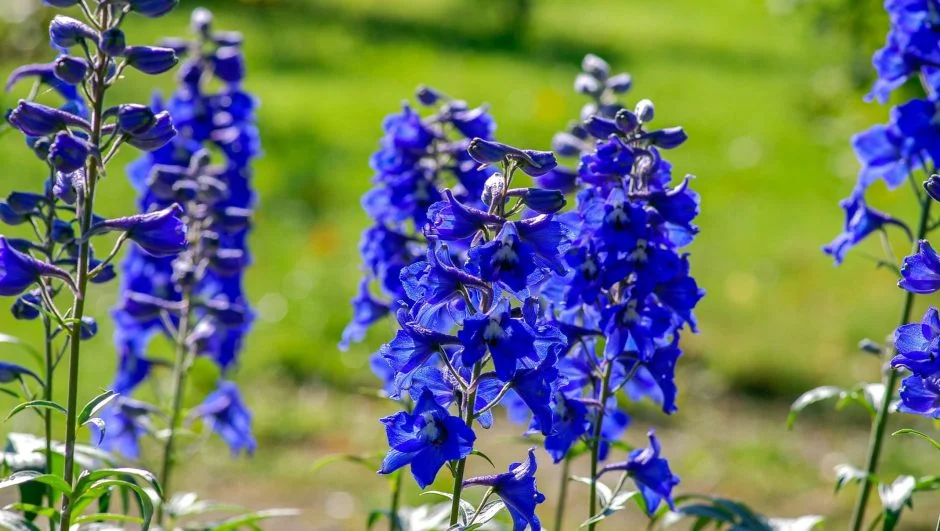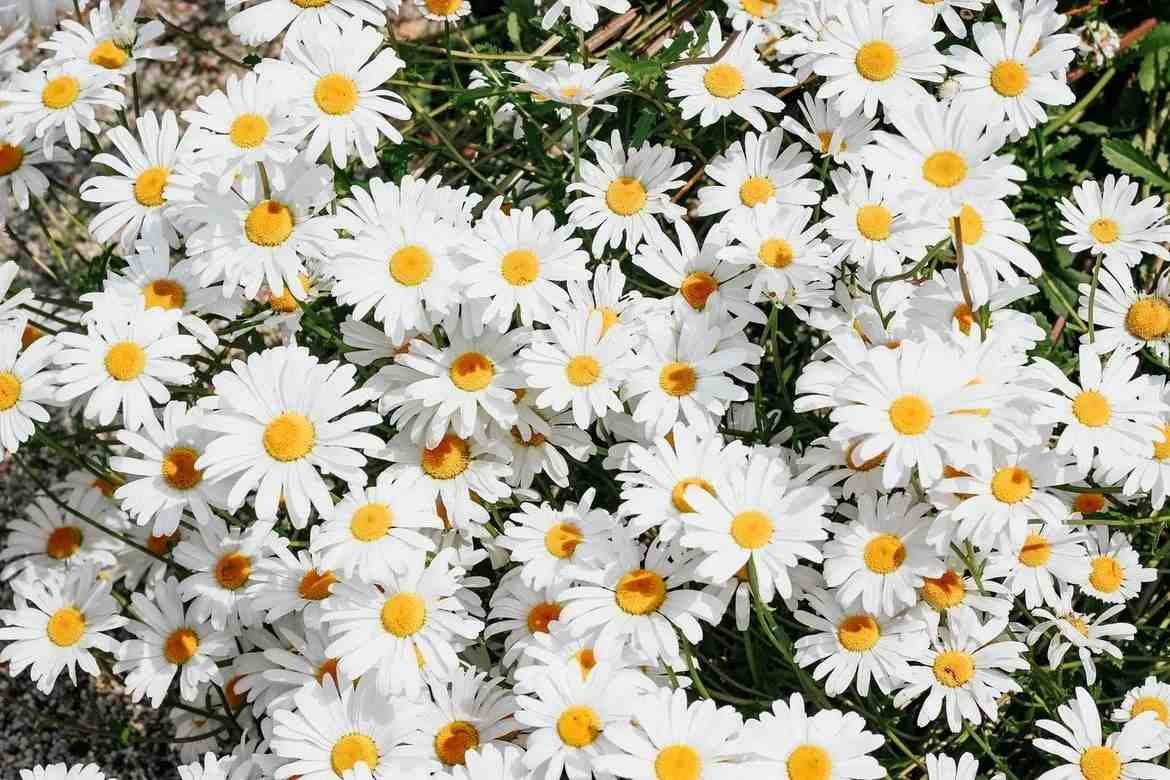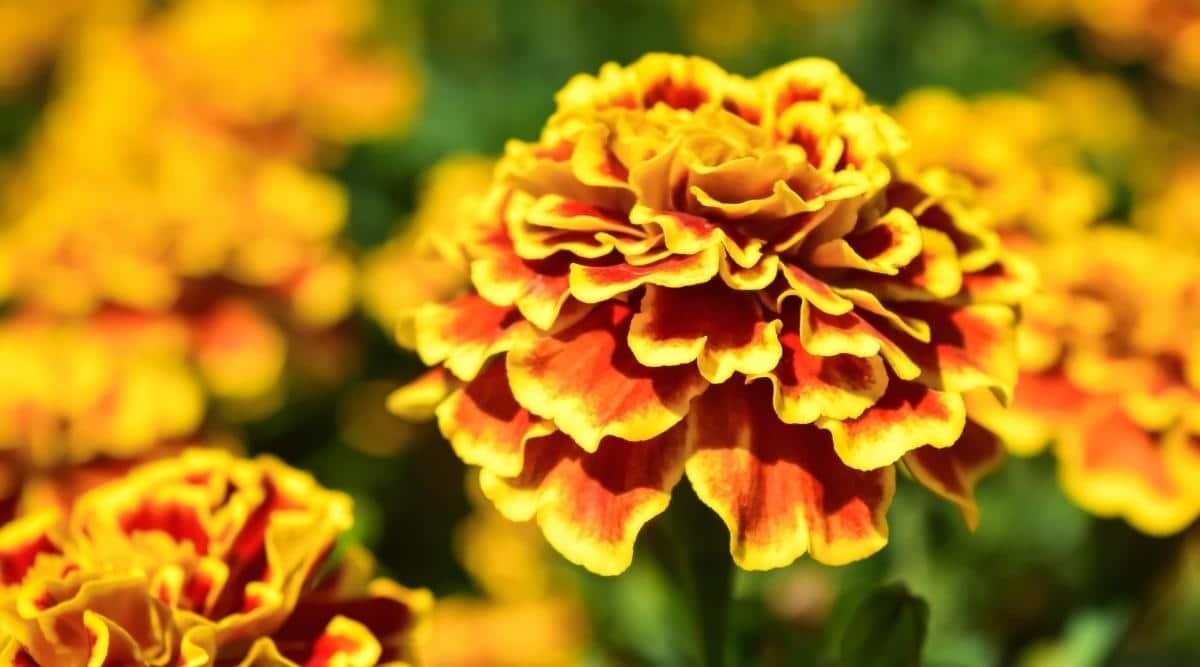Delphinium Flower Facts, Uses, Cultivation, Botany, Historical Significance
 Delphinium Flower Facts
Delphinium Flower FactsDelphinium Flower Facts | Description | Distribution and Habitat | Botany and evolution | Cultivation | Uses | Cultural | Interesting facts | frequently asked questions about Delphinium
Delphiniums are stunning flowers that are known for their tall, showy spikes of densely packed blooms in vibrant shades of blue, pink, purple, and white. These blooms, which resemble miniature dolphins, have earned the flower its common name of “Delphinium”. With their striking beauty and elegant appearance, Delphiniums have become a popular choice for gardeners and flower enthusiasts alike. Whether grown in a garden bed or used as cut flowers in a bouquet, Delphiniums are sure to add a touch of charm and grace to any setting. In this article, we will explore the various aspects of the flower Delphinium, including its history, characteristics, care, and symbolism.
Taxonomy of Delphinium
| Kingdom | Plantae |
|---|---|
| Clade | Angiosperms |
| Clade | Eudicots |
| Order | Ranunculales |
| Family | Ranunculaceae |
| Genus | Delphinium |
Morphology of Delphinium
| Feature | Description |
|---|---|
| Flower Type | Bisexual, actinomorphic |
| Flower Size | 1 to 2 inches (2.5 to 5 cm) in diameter |
| Sepals | 5 petal-like sepals, typically blue, but can also be white, pink, or purple |
| Petals | The true petals are small and inconspicuous, and are located at the base of the sepals |
| Stamens | Numerous stamens with yellow anthers |
| Pistil | A single pistil with several carpels |
| Inflorescence | Dense, elongated raceme or spike |
| Leaves | Palmately lobed or divided leaves |
| Stem | Tall, erect stems with alternate leaves |
| Fruit | A follicle containing numerous small, black, shiny seeds |

Description of Delphinium
Delphiniums are herbaceous perennials that belong to the Ranunculaceae family. They are native to the Northern Hemisphere, with some species found in the high-altitude regions of tropical Africa. Delphiniums are known for their tall, showy spikes of densely packed flowers, which come in a variety of vibrant colors including blue, pink, purple, and white.
The flower structure of Delphiniums is bisexual and actinomorphic, with five petal-like sepals and small, inconspicuous petals located at the base of the sepals. The numerous stamens have yellow anthers and surround a single pistil with several carpels. The flower size ranges from 1 to 2 inches (2.5 to 5 cm) in diameter and is densely packed in an elongated raceme or spike inflorescence.
The leaves of Delphiniums are palmately lobed or divided, and the tall, erect stems have alternate leaves. The fruit of the Delphinium flower is a follicle that contains numerous small, black, shiny seeds.
In terms of care, Delphiniums prefer moist, well-drained soil and full sun to partial shade. They are susceptible to root rot, so it is important to avoid overwatering. Deadheading the spent blooms can help promote new growth and prevent the plant from self-seeding excessively.
Symbolically, Delphiniums represent heavenly transcendence and a feeling of joy and happiness. They are often used in floral arrangements for weddings, as they symbolize love, devotion, and fidelity.
In conclusion, Delphiniums are a beautiful and popular flower with a unique structure and vibrant colors. They require specific care but are well worth the effort for their stunning appearance and symbolism.
Distribution and habitat of Delphinium
Delphiniums are a widely distributed genus of herbaceous perennials found throughout the Northern Hemisphere. They are most abundant in temperate regions but can also be found in tropical high-altitude areas. Delphiniums are commonly found in meadows, fields, and woodlands, and they grow best in moist, well-drained soil with full sun to partial shade.
In North America, Delphiniums are found from Alaska to Mexico, with the highest species diversity found in the western United States. They are commonly found in mountain meadows and forests, but some species can also be found in the Great Plains and the eastern United States.
In Europe, Delphiniums are found from Scandinavia to the Mediterranean, with the highest species diversity found in the Alps and the Carpathian Mountains. They are commonly found in meadows, fields, and forests, but some species can also be found in rocky habitats and along riverbanks.
In Asia, Delphiniums are found from Siberia to the Himalayas, with the highest species diversity found in the mountainous regions of China. They are commonly found in alpine meadows and subalpine forests, but some species can also be found in desert regions and on the Tibetan plateau.
Overall, Delphiniums have a wide distribution and can be found in a variety of habitats, from meadows to forests and from high-altitude regions to lowland areas. They are a hardy and adaptable plant that can grow in a range of environmental conditions, making them a popular choice for gardeners and horticulturists alike.
Botany and evolution of Delphinium
Delphiniums are herbaceous perennials belonging to the genus Delphinium of the Ranunculaceae family. The genus includes over 300 species, with a wide variety of flower colors, shapes, and sizes. The name “Delphinium” is derived from the Greek word “delphis,” which means dolphin, due to the shape of the nectary, which is said to resemble a dolphin.
Delphiniums are believed to have originated in Asia and Europe, and their distribution has expanded through human cultivation. The genus includes both annual and perennial species, and they are known for their tall, showy spikes of densely packed flowers.
The flower structure of Delphiniums is unique, with five petal-like sepals that form the characteristic “spur” at the back of the flower. The true petals are small and inconspicuous, and are located at the base of the sepals. The numerous stamens have yellow anthers and surround a single pistil with several carpels. The flower size ranges from 1 to 2 inches (2.5 to 5 cm) in diameter and is densely packed in an elongated raceme or spike inflorescence.
The leaves of Delphiniums are palmately lobed or divided, and the tall, erect stems have alternate leaves. The fruit of the Delphinium flower is a follicle that contains numerous small, black, shiny seeds.
In terms of evolution, the genus Delphinium is believed to have originated in the Late Eocene to Early Oligocene period, approximately 33 to 40 million years ago. The earliest known fossils of the genus have been found in North America, and it is believed that the genus diversified and spread to other parts of the world through multiple migration events.
Overall, Delphiniums are a unique and fascinating plant with a distinctive flower structure and a long evolutionary history. They continue to be popular among gardeners and horticulturists due to their beauty and versatility.
Cultivation of Delphinium
Delphiniums are a popular ornamental plant that can be easily cultivated in a variety of growing conditions. They prefer moist, well-drained soil with full sun to partial shade, and they thrive in cool, temperate climates. Here are some tips for cultivating Delphiniums:
- Planting: Delphiniums can be planted from seeds or propagated from cuttings or division. They should be planted in early spring or fall, and the soil should be prepared with organic matter and compost. Plant the Delphiniums about 12 to 18 inches (30 to 45 cm) apart, depending on the size of the plant.
- Watering: Delphiniums need regular watering, especially during hot, dry weather. They prefer moist soil but can be prone to root rot if the soil is too wet. Water the Delphiniums deeply once a week or more often if the soil is dry.
- Fertilizing: Delphiniums benefit from regular fertilization with a balanced, all-purpose fertilizer. Apply the fertilizer in early spring and again in midsummer, following the package instructions.
- Staking: Delphiniums can grow quite tall and may need staking to prevent the stems from breaking in the wind. Use bamboo stakes or other supports to keep the plants upright.
- Deadheading: Deadhead the spent flowers regularly to encourage the production of new blooms. This will also help to prevent the plants from becoming too leggy.
- Pests and Diseases: Delphiniums can be prone to pests such as aphids, slugs, and snails, as well as diseases such as powdery mildew and crown rot. Monitor the plants regularly and treat any problems promptly.
- Winter Care: In colder climates, Delphiniums may need to be protected from frost and cold temperatures. Cover the plants with a layer of mulch or straw in the fall to insulate the roots, and remove the covering in the spring when new growth appears.
In conclusion, Delphiniums are a beautiful and versatile plant that can be easily cultivated with proper care and attention. They are a popular choice for gardeners and horticulturists due to their striking colors and unique flower structure, and they can add a touch of elegance and beauty to any garden or landscape.
Uses of Delphinium
Delphiniums have several uses, including ornamental and medicinal purposes. Here are some of the most common uses of this flower:
- Ornamental: Delphiniums are widely grown as ornamental plants due to their striking colors, unique flower structure, and tall, showy spikes of densely packed flowers. They are popular in flower beds, borders, and cottage gardens, and they are also used as cut flowers in floral arrangements.
- Medicinal: Delphiniums have been used in traditional medicine for centuries. The plant contains several alkaloids, including delphinine, which have been used to treat a variety of conditions such as muscle spasms, hypertension, and respiratory problems. However, the alkaloids can be toxic in large quantities and should only be used under the guidance of a qualified healthcare professional.
- Symbolic: Delphiniums have also been used symbolically in various cultures. In Greek mythology, the Delphinium flower was associated with the god Apollo and was believed to have healing properties. In the language of flowers, the Delphinium is often associated with feelings of lightness and levity, as well as fickleness and ardent attachment.
- Insecticide: Some species of Delphiniums, particularly D. consolida, have insecticidal properties and have been used to control pests such as aphids and caterpillars.
Overall, Delphiniums have several uses and are appreciated for their beauty, unique flower structure, and potential medicinal properties. They continue to be a popular choice for gardeners and horticulturists, as well as those interested in traditional medicine and symbolism.
Cultural and Historical Significance of Delphinium
Delphiniums have a rich cultural and historical significance dating back to ancient times. Here are some of the notable cultural and historical references to this flower:
- Greek Mythology: In Greek mythology, the Delphinium was associated with the god Apollo and was believed to have healing properties. According to the myth, Apollo was chasing the nymph Daphne, who was turned into a laurel tree to escape him. Apollo then created the Delphinium flower from the tears of sorrow he shed over the loss of Daphne.
- Christian Symbolism: In Christianity, the Delphinium was believed to symbolize the resurrection and rebirth of Jesus Christ. The shape of the flower was thought to resemble the spire of a church, and the blue color was associated with the sky and heaven.
- Victorian Era: During the Victorian era, the Delphinium became a popular ornamental plant and was featured in many gardens and floral arrangements. The flower was also associated with the concept of levity and lightness, and was often given as a gift to cheer someone up.
- Traditional Medicine: Delphiniums have been used in traditional medicine for centuries. The plant contains several alkaloids, including delphinine, which have been used to treat a variety of conditions such as muscle spasms, hypertension, and respiratory problems.
- Artistic Representations: Delphiniums have been featured in various forms of art, including paintings, tapestries, and ceramics. One notable example is Vincent van Gogh’s painting “Vase with Twelve Sunflowers,” which features a vase of sunflowers and a bouquet of Delphiniums.
In conclusion, Delphiniums have a rich cultural and historical significance that spans across various cultures and time periods. The flower’s beauty, unique shape, and potential medicinal properties have made it a popular choice for gardeners, artists, and traditional healers alike.
Explanatory Notes for Delphinium
Explanatory notes for Delphiniums include important information regarding the flower’s identification, growth habits, and cultivation requirements. Here are some of the most important explanatory notes for this flower:
- Identification: Delphiniums are tall, herbaceous perennials that can grow up to 6 feet tall. They have palmately divided leaves and tall, showy spikes of densely packed flowers. The flowers have a unique shape, with a spur at the back and a fan-shaped top. They are available in various shades of blue, purple, pink, white, and red.
- Growth Habits: Delphiniums prefer full sun to partial shade and well-draining, fertile soil. They are tolerant of cold temperatures and can grow in USDA zones 3-7. The plant is susceptible to powdery mildew and other fungal diseases, so good air circulation and proper watering are essential.
- Cultivation Requirements: Delphiniums are propagated by seeds or division. The seeds should be sown in the fall or early spring, and the plants should be transplanted in the spring or fall. Delphiniums require regular watering and fertilization, and the dead flowers should be removed to promote continuous blooming.
- Toxicity: Delphiniums contain several alkaloids, including delphinine, which can be toxic in large quantities. The plant should be kept away from children and pets, and proper precautions should be taken when handling the plant.
- Ornamental and Medicinal Uses: Delphiniums are widely grown as ornamental plants and are popular in flower beds, borders, and cottage gardens. They are also used as cut flowers in floral arrangements. The plant has potential medicinal properties, but should only be used under the guidance of a qualified healthcare professional.
Overall, Delphiniums are beautiful and unique plants that require proper care and attention to thrive. Their potential toxicity should be taken seriously, but their ornamental and potential medicinal uses make them a valuable addition to any garden or floral arrangement.
Interesting facts about Delphinium
Here are 10 interesting facts about Delphiniums:
- The name “Delphinium” comes from the Greek word “delphis,” which means dolphin. The flower’s shape was thought to resemble a dolphin’s nose.
- Delphiniums are also known as larkspur, due to the shape of the flower’s spur.
- The flower is a member of the Ranunculaceae family, which includes other popular garden flowers like buttercups and columbines.
- Delphiniums have been cultivated for ornamental purposes since the 16th century.
- The flower’s range of colors includes blue, purple, pink, white, and red.
- The plant’s sap can be used as a natural dye for fabric.
- Delphiniums are the birth flower for the month of July.
- In the language of flowers, Delphiniums symbolize levity, open heart, and ardent attachment.
- The flower is a natural repellent for pests like aphids and spider mites.
- The alkaloids found in Delphiniums, such as delphinine, have been used in traditional medicine to treat conditions like respiratory problems, muscle spasms, and high blood pressure.
General queries or frequently asked questions about Delphinium
1. What are the different types of Delphiniums?
There are over 250 species of Delphiniums, with many cultivars and hybrids available. Some of the most popular types include Pacific Giants, Belladonna, New Millennium, and Magic Fountains.
2. Are Delphiniums difficult to grow?
Delphiniums require some care and attention, but are not considered difficult to grow. They prefer well-draining soil, regular watering, and good air circulation. They are also susceptible to powdery mildew and other fungal diseases, so proper care is important.
3. What is the best time to plant Delphiniums?
The best time to plant Delphiniums is in the fall or early spring, when temperatures are cool and the soil is moist. This allows the plant to establish roots before the hot summer months.
4. Can Delphiniums grow in containers?
Yes, Delphiniums can be grown in containers as long as the container is large enough to accommodate the plant’s growth and has good drainage.
5. How long do Delphiniums bloom?
Delphiniums typically bloom in early to mid-summer and can continue blooming for several weeks, depending on the cultivar and growing conditions.
6. How tall can Delphiniums grow?
Delphiniums can grow up to 6 feet tall, depending on the cultivar and growing conditions.
7. Are Delphiniums toxic to pets?
Yes, Delphiniums contain alkaloids that can be toxic to pets if ingested in large quantities. It’s important to keep pets away from the plant and seek veterinary care if ingestion occurs.
8. How can I prolong the blooming period of my Delphiniums?
Deadheading, or removing spent flowers, can promote continuous blooming. Additionally, regular fertilization and watering can help prolong the blooming period.
9. Can I save Delphinium seeds for next year’s planting?
Yes, Delphinium seeds can be saved for next year’s planting. The seeds should be harvested when the pods turn brown and the seeds are fully mature. Store the seeds in a cool, dry place until planting season.
10. What is the meaning behind the Delphinium’s common name, “Larkspur”?
The Delphinium’s common name, “Larkspur,” comes from the shape of the flower’s spur, which is thought to resemble the hind claw of a lark.
Conclusion
In conclusion, Delphiniums are a beautiful and fascinating flower that have captured the attention of gardeners, artists, and nature lovers for centuries. With over 250 species, a wide range of colors, and unique morphology, Delphiniums offer something for everyone. Their cultivation requires some care and attention, but the payoff of vibrant, long-lasting blooms is well worth it. Additionally, Delphiniums have a rich history and cultural significance, and have been used for a variety of purposes throughout the ages, from dyeing fabric to traditional medicine. Whether you’re a seasoned gardener or just beginning to explore the world of flowers, Delphiniums are a plant worth exploring and celebrating.












